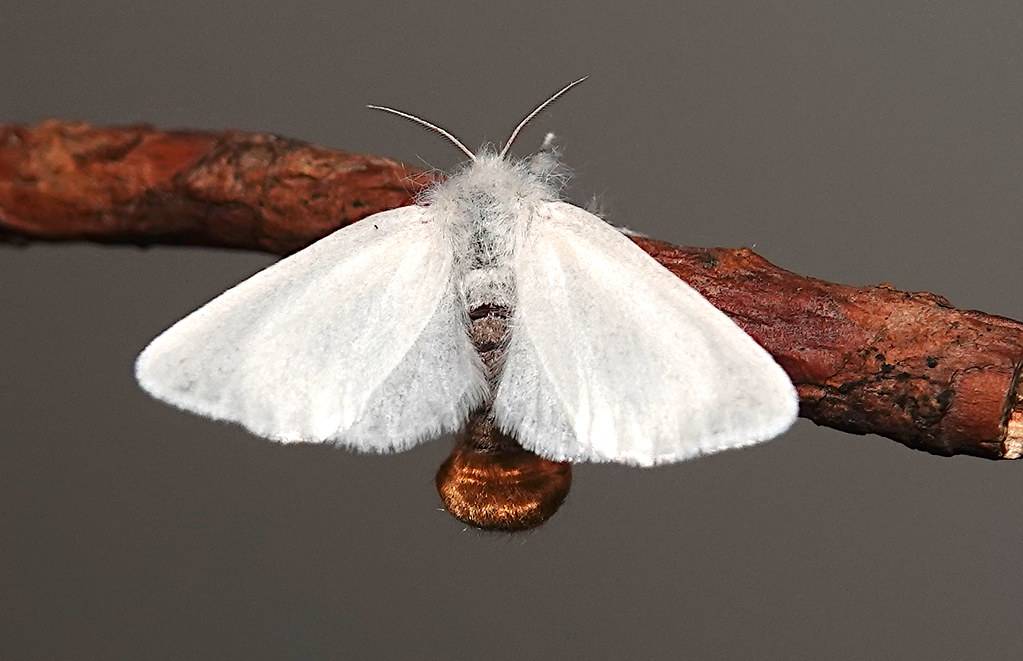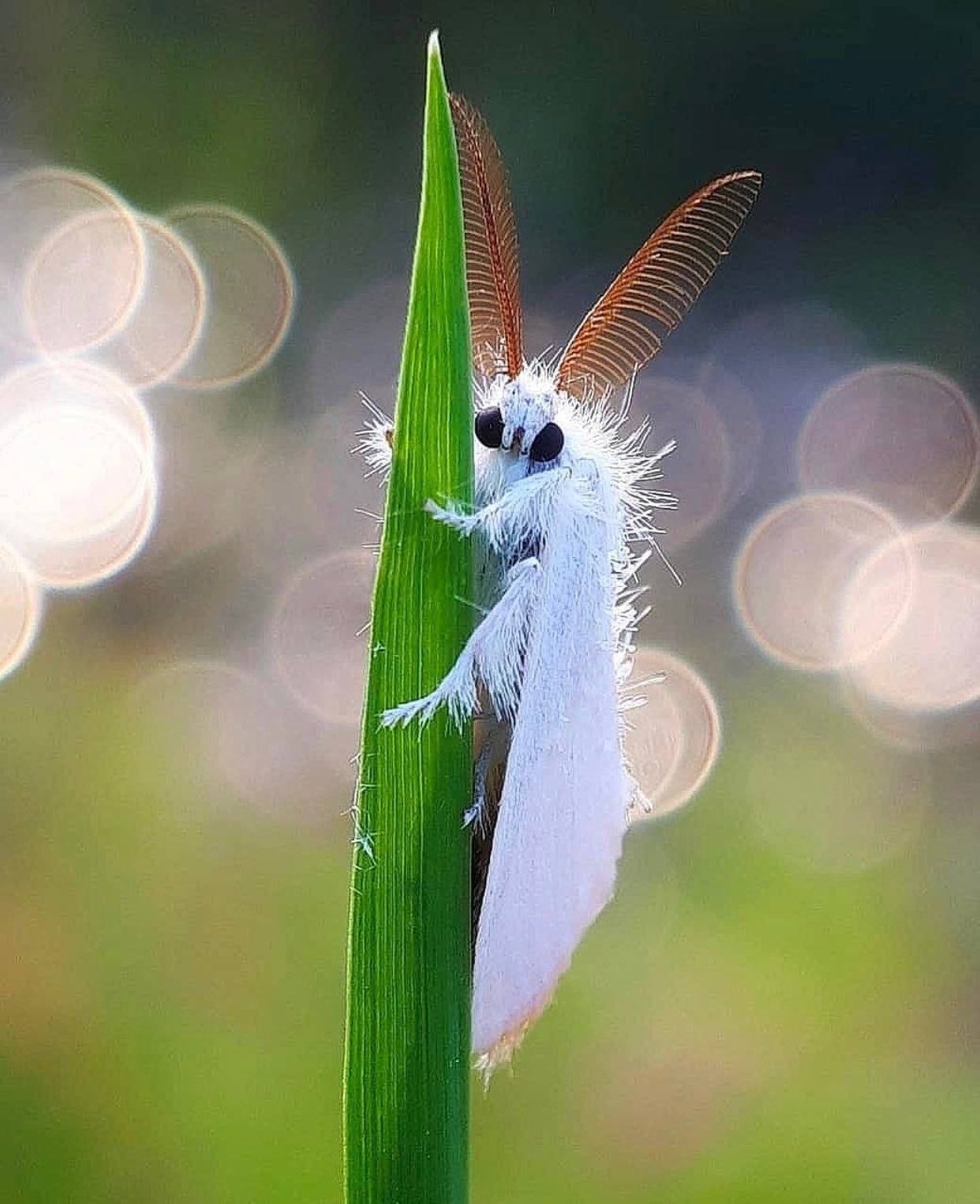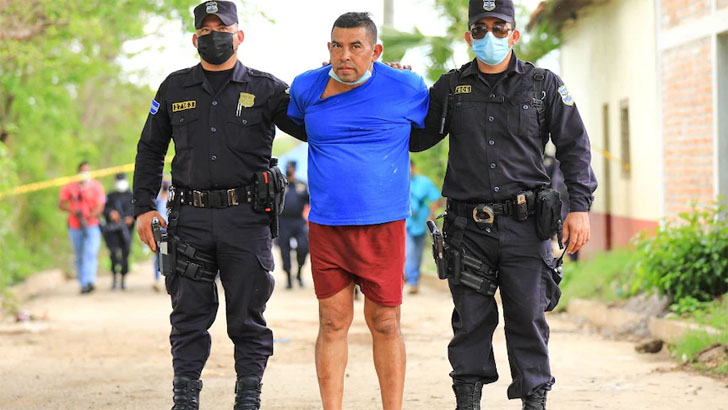The brown-tail moth (Euproctis chrysorrhoea) is a moth of the family Erebidae. It is native to Europe, neighboring countries in Asia, and the north coast of Africa. Descriptions of outbreaks, i.e., large population increases of several years duration, have been reported as far back as the 1500s. The life cycle of the moth is atypical, in that it spends approximately nine months (August to April) as larvae (caterpillars), leaving about one month each for pupae, imagos and eggs. Larvae (caterpillars) are covered in hairs. Two red spots on the back, toward the tail, distinguish these species from other similarly hairy moth larvae. The winged adults have white wings and a hairy white body with a tuft of brown hair at the tip of the abdomen. Females lay one egg cluster, usually on the underside of a leaf of a host plant. The species is polyphagous, meaning that it feeds on many different species of trees, including pear, apple, maple and oak.
This species was accidentally introduced to the United States in the 1890s. During the early 20th century it was present from eastern Connecticut northward into New Brunswick, Canada, but a subsequent severe population collapse reduced the territory to parts of coastal Maine and Cape Cod, Massachusetts, by the late 20th century. One theory for the decline appeared to be parasitism by a fly introduced to combat spongy moths. Starting in 2015 there has been a population spike and territory expansion in coastal Maine. In Europe, there are multiple parasitic and predator species, yet there is still a history of population outbreaks.
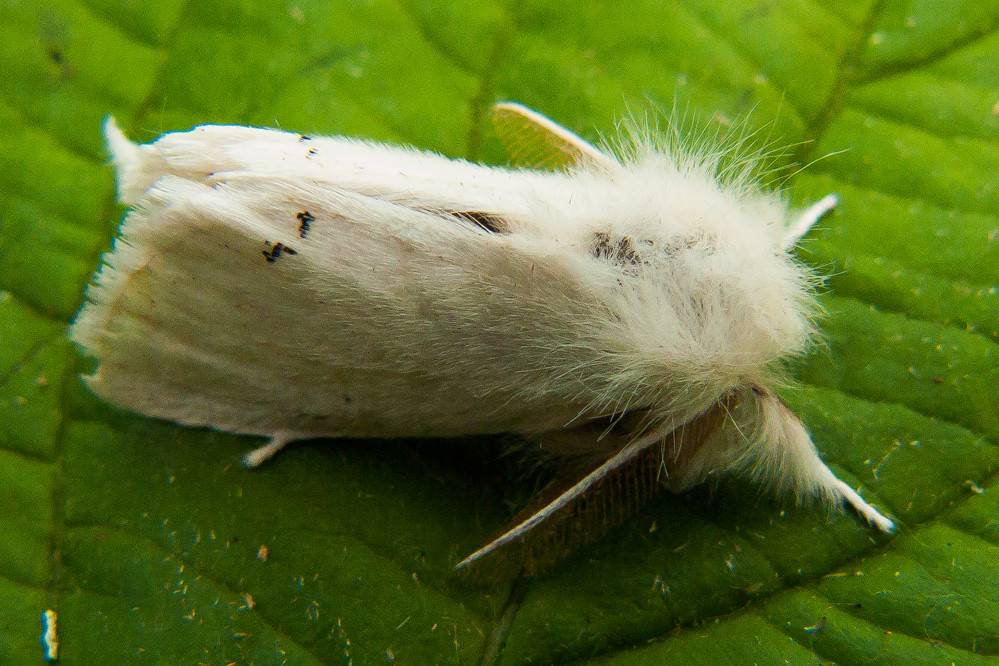
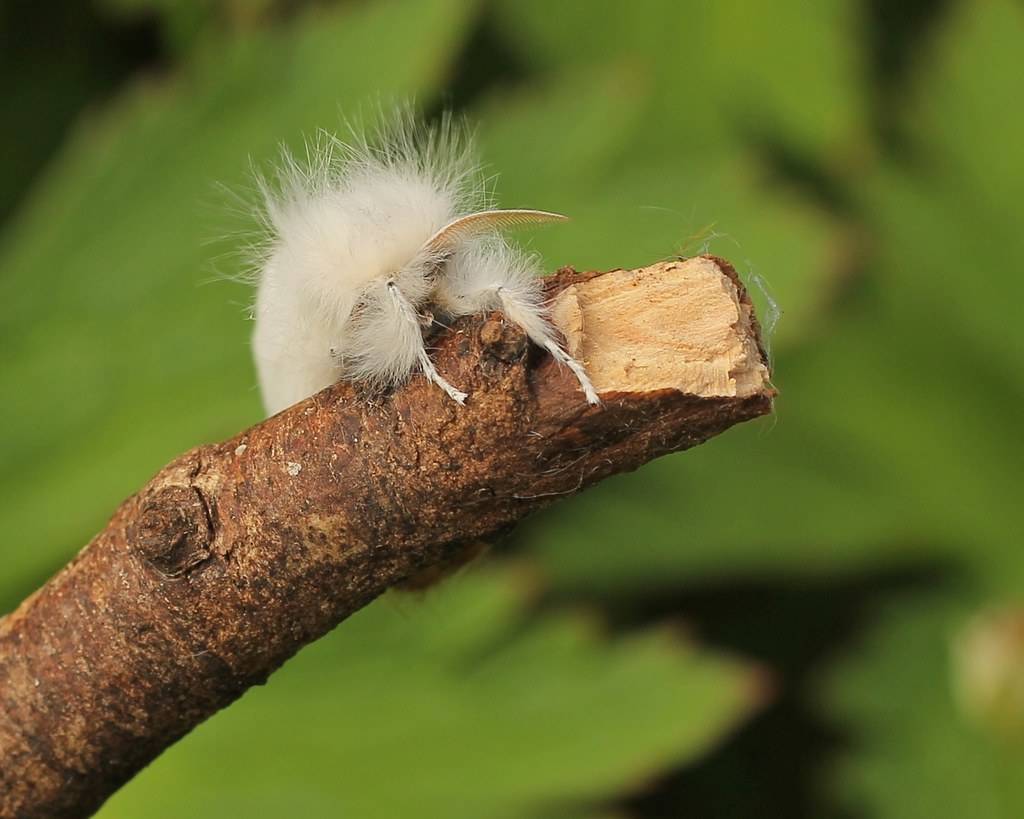
Hairs from the caterpillars are toxic for humans, causing a poison ivy-like itchy rash of up to sometimes weeks-long duration due to mechanical and chemical irritation. Direct contact with larvae is not necessary, as the hairs are shed and can become windblown.Toxins in the hairs remain potent for up to three years. Outdoor activities such as mowing a lawn or raking leaves in the fall can cause exposure.
The upper surface of the wings of this species is pure white. Males may have some brown color on the underside of the forewing. Wingspan is 36–42 millimetres (1.4–1.7 in). The body is very hairy and white except for the tail which is covered in reddish-brown hairs, much more prominent in the females.[8] Males have larger antennae, used to detect pheromones released by unmated females. Females have a larger body.[8] As winged adults, this species is superficially similar in appearance to Euproctis similis (native to Europe) and Hyphantria cunea (native to North America), but female E. similis have a yellow tail tuft and H. cunea lacks tail tuft coloration.
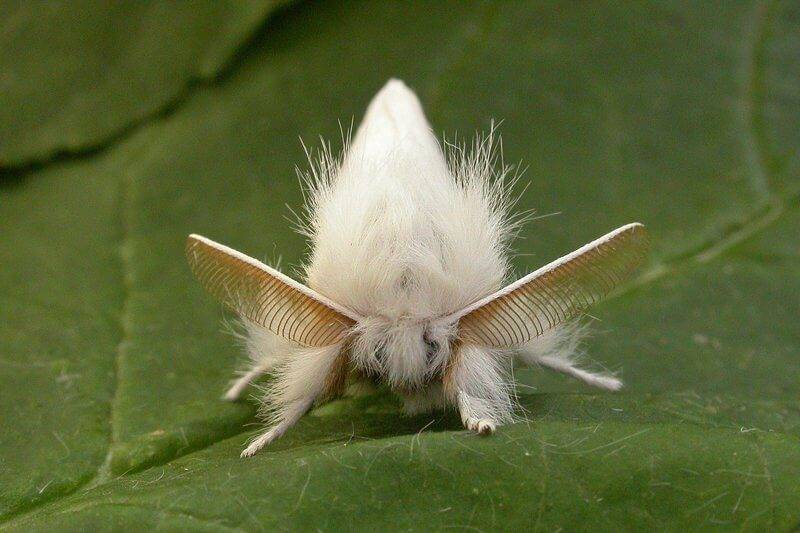
The female lays one cluster of 200 to 400 eggs, typically on the underside of a leaf. The egg cluster is covered with hairs from her anal tuft.[8] The larva is very hairy, brown with white markings, and two prominent red spots toward the tail end. The hairs provide protection from predators; the larva incorporates some into the cocoon within which it pupates.[9] The species overwinters communally as larvae within a tough, silken tent constructed around branch-tip leaves and anchored to twigs. In areas where the species is abundant, these tents are a familiar sight, and can be seen on a huge range of plants, especially in late fall and winter when unaffected leaves have fallen.

The brown-tail moth is an invasive species in the United States and Canada, having arrived in Somerville, Massachusetts, circa 1890 and becoming widespread there and in neighboring Cambridge by 1897. Initial outbreaks were most evident in pear and apple trees. Doctors reported “poisonings” (skin rash) far worse than poison ivy rash. Within a few years it was seen as a serious, fast-spreading, horticultural and health problem.[1] Through the early parts of the 20th century it was present in much of New England from eastern Connecticut to Maine, and northward into New Brunswick, Canada, but the 1906 introduction of the parasitic tachinid fly Compsilura concinnata to counter spongy moths collaterally impacted brown-tail moths. By the late 20th century the habitat was reduced to the coast and islands of Maine, and also parts of Cape Cod, Massachusetts.[2] Cold and wet weather hinders re-expansion of the population outside its current territories,[11] although starting in 2015 there has been a population spike and territory expansion in coastal Maine, from Portland to Bar Harbor.[3] In addition to North America, there have been reports of this species
